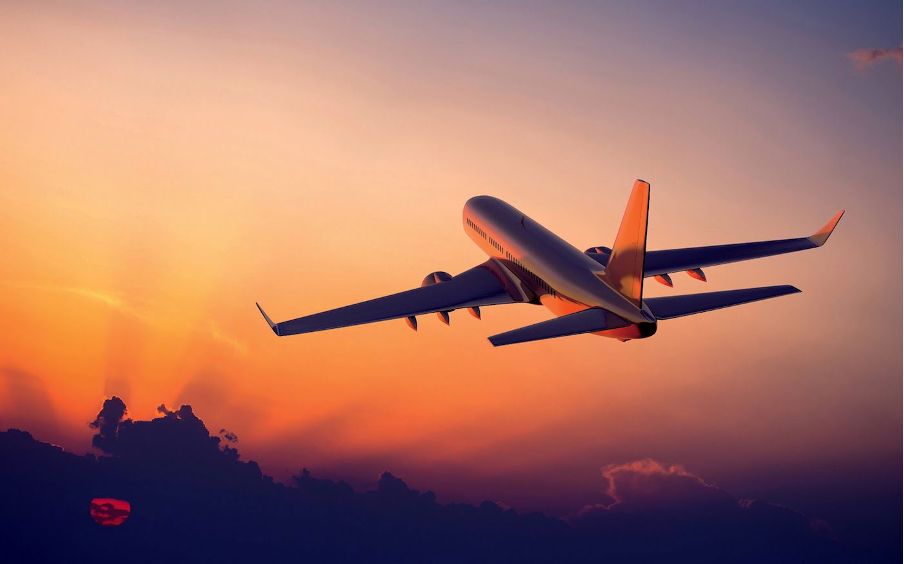Turbulence Warning for Flights to Antalya

Recent consecutive turbulence incidents resulting in injuries to many passengers have heightened concerns, especially among those with a fear of flying. Associate Professor Dr. Salim Kurnaz from the Department of Aviation at Istanbul Aydin University evaluated these incidents, explained their causes, and discussed what should be done during turbulence. Kurnaz also pointed out that turbulence may occur more frequently on flights to Antalya.
The fears regarding turbulence increased after incidents such as the loss of life of one passenger and injuries to 104 individuals on a London-Singapore flight, fractures suffered by a cabin crew member on an Istanbul-Izmir flight, and injuries to 12 individuals on a Doha-Dublin flight. The fact that 2 out of the 3 turbulence incidents occurred over Turkey drew attention to expert opinions.
Associate Professor Dr. Salim Kurnaz from the Faculty of Applied Sciences at Istanbul Aydin University responded to the questions about the subject.
How does turbulence occur?
Explaining the formation of turbulence, Kurnaz said, “In aviation, we prefer the wind passing over and under the aircraft wings to be parallel, steady, and fast. Turbulence occurs when these airflow patterns are disrupted, causing different degrees of contact with the upper and lower surfaces of the wings. Various airflow patterns in the atmosphere, as well as geographical factors such as high-altitude features like mountains, cause these winds to fluctuate in various directions, resulting in wind hitting the aircraft wings at different angles and causing the aircraft to lose altitude.”
Toros Mountains can cause minor turbulence:
Before each flight, all meteorological events are known, but Kurnaz stated that clear-air turbulence (CAT), which cannot be predicted, is a factor. He explained where turbulence is more common as follows: “There are three factors that affect the formation of turbulence. One is cumulus clouds carrying heavy rain. These clouds are visible on meteorological radar, so if they are present along the flight routes, the aircraft's routes are altered. The second reason is geographical features like mountains. These cause airflow to rise first and then descend. For example, aircraft flying from Antalya to Istanbul experience this effect to a lesser extent when passing over the Taurus Mountains. Higher mountain formations like the Himalayas have a greater impact on airflow. Another type of turbulence, called clear-air turbulence, occurs at locations where warm air currents form boundary layers with cold currents.”
Does turbulence cause the aircraft to crash?
Emphasizing that turbulence lasts no more than 2-3 minutes, Associate Professor Dr. Salim Kurnaz said, “There is no record of an aircraft crash caused by turbulence. During turbulence, passengers not wearing seat belts, standing, or caught in the restroom may experience events such as hitting their heads on the ceiling or any other surface or moving a few seats forward or backward. Being caught standing is particularly likely to cause serious injuries.”
Explaining why 2 out of 3 incidents occurred over Turkey:
Attributing the recent turbulence incidents to the onset of summer, Kurnaz said, “With the increase in warm air currents in the northern hemisphere, turbulence occurs where these warm air currents separate from cold air currents.” He noted that due to global warming and the resulting changes in the locations of warm and cold air currents, such incidents are normal. Regarding why 2 out of the last 3 severe turbulence incidents occurred over Turkey, Associate Professor Dr. Salim Kurnaz stated, “There is a cold climate system passing over Europe's south and Turkey, with a warm air current present. The latest incident also showed the effect of this warm air current. There is no specific risk that such incidents will mostly occur in Turkey.”
Seat belts should be fastened throughout the flight:
Kurnaz emphasized that recent events should not be interpreted as increasing the danger of flying. He said the most important precaution against turbulence is to fly with seat belts fastened. Dr. Kurnaz stated, “Passengers should keep in mind that turbulence may last a few minutes and remain calm. If they don't need to move, we advise them to fly with their seat belts fastened. This way, they will be least affected in case of sudden turbulence.”


